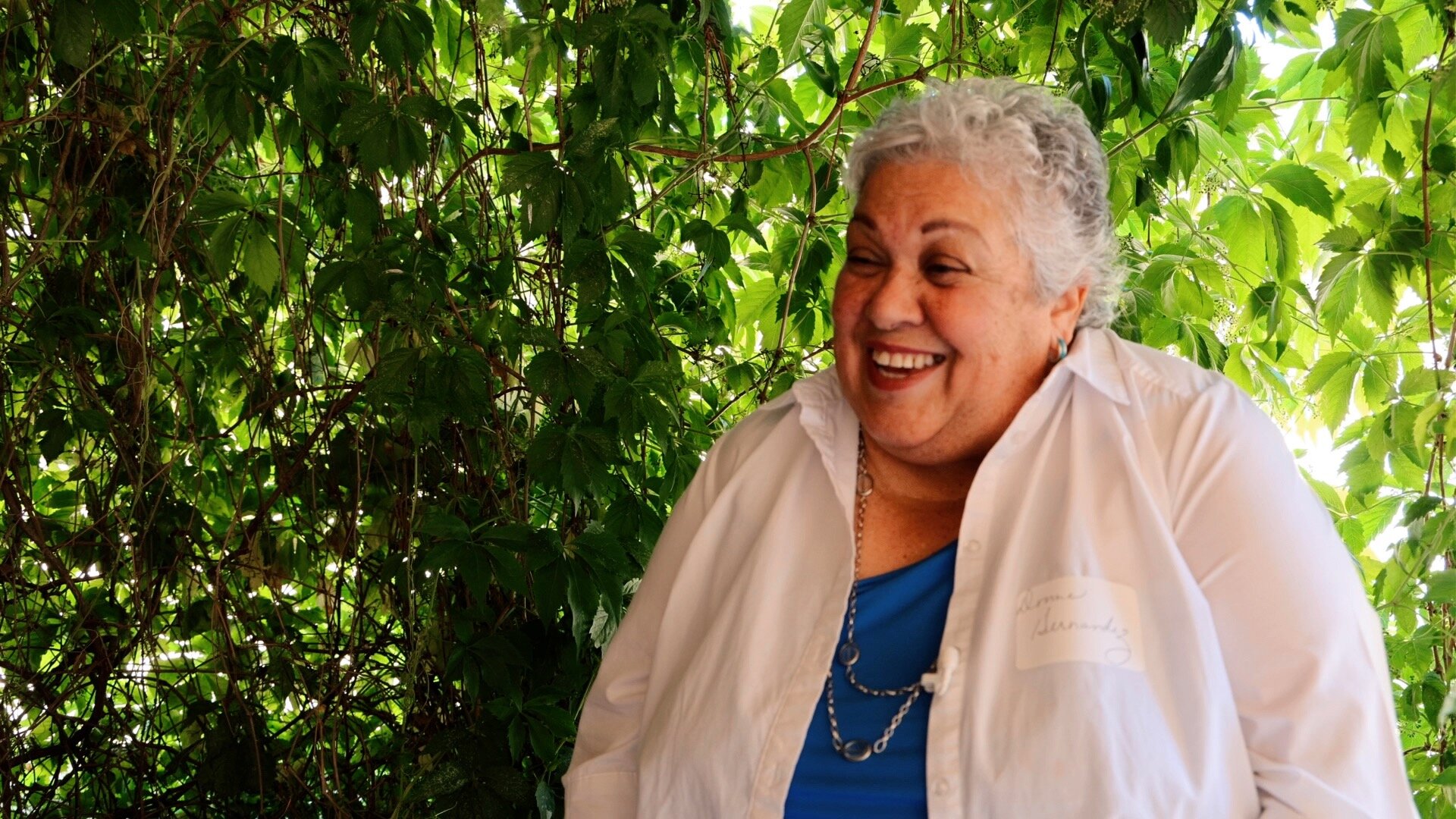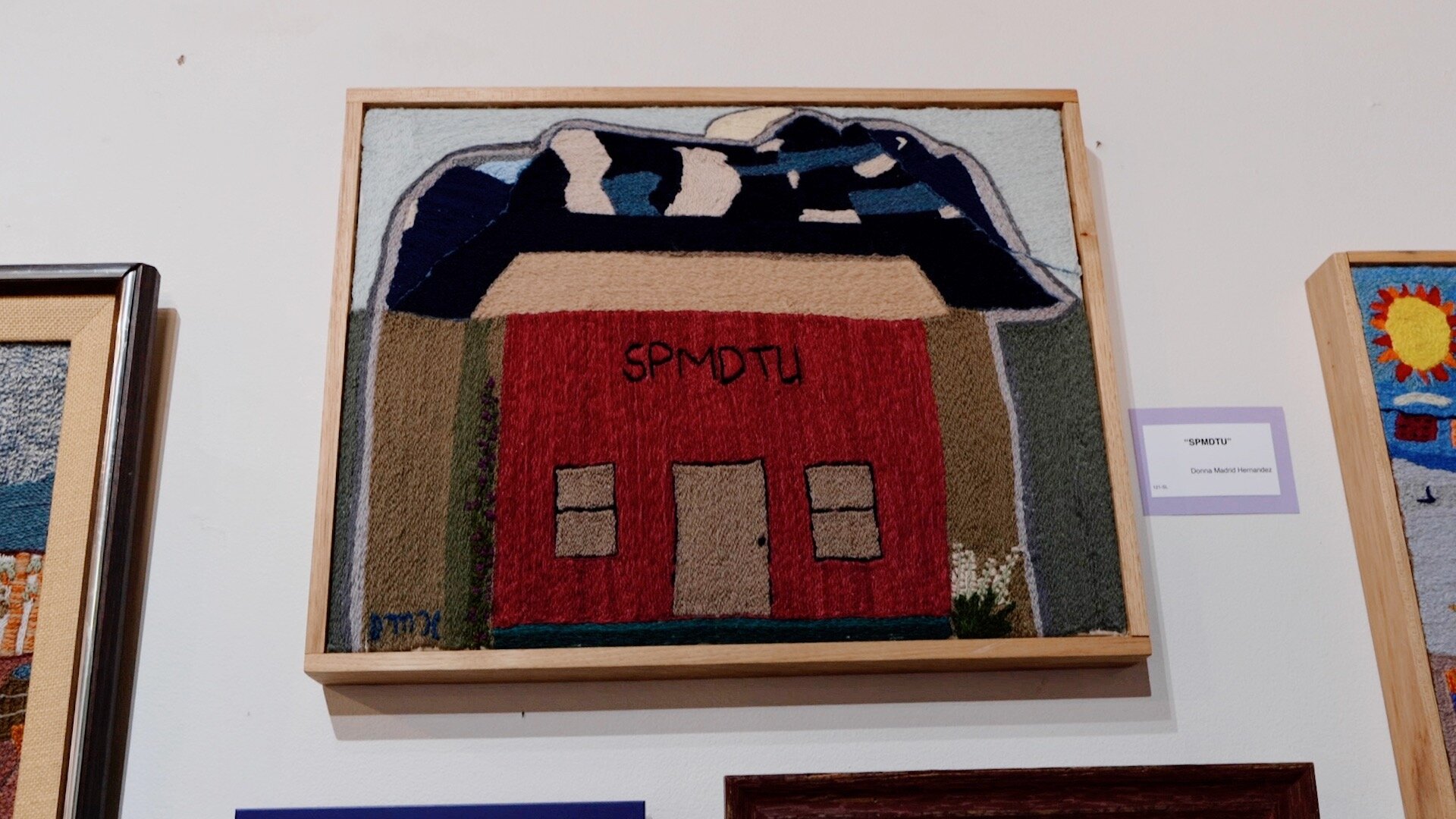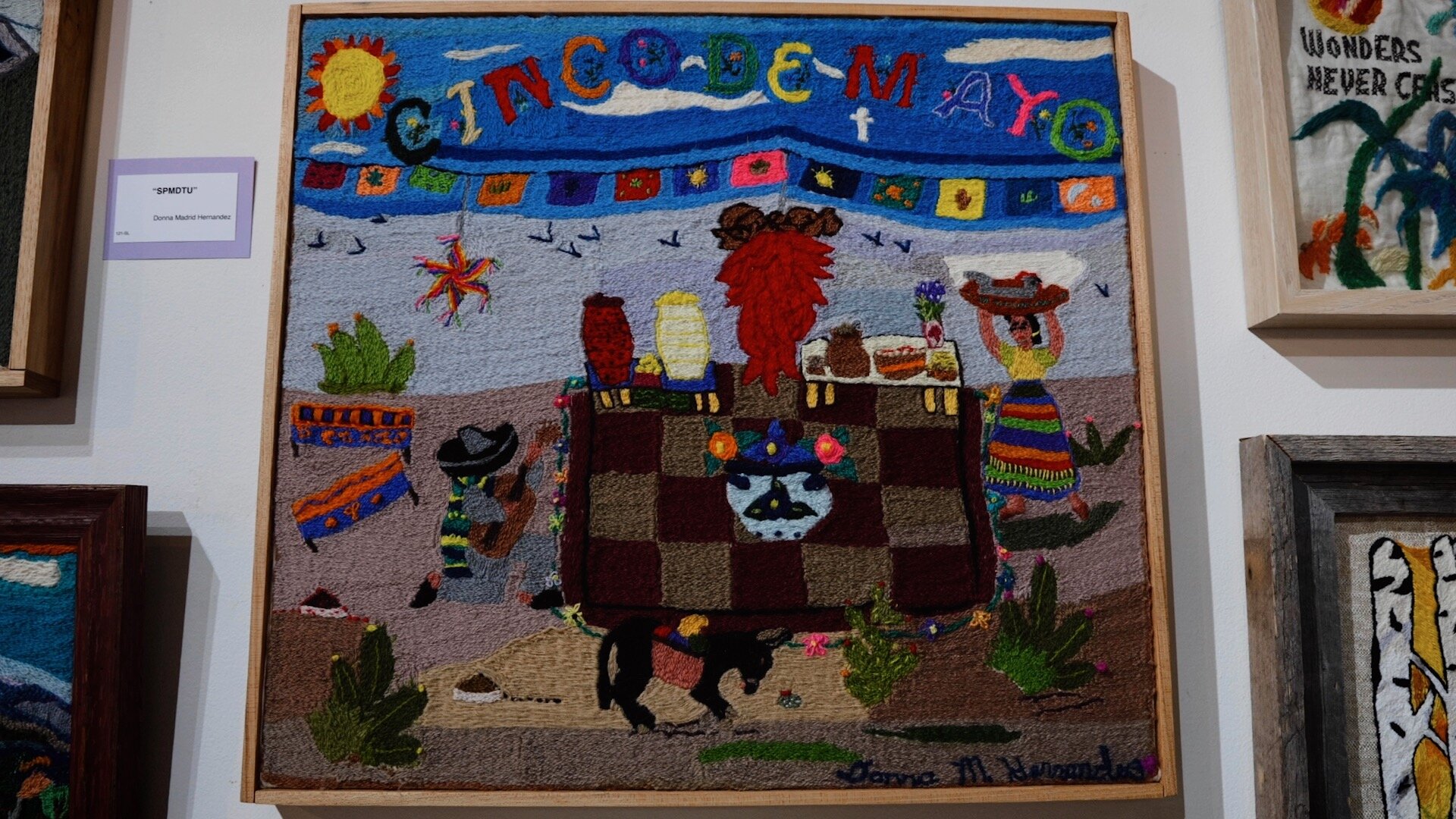The culture of colcha embroidery, alive in Taos

TAOS, N.M. — Colcha artists from the outskirts of Albuquerque to the northern edge of the San Luis Valley gathered at La Hacienda de los Martinez July 9 to celebrate an embroidery style rooted in southern Colorado and New Mexico.
Colcha embroidery is a textile artform originating from the ornate mending habits of early Spanish settlers, explained Julia Gomez, who teaches visitors and community members about colonial art at El Rancho de las Golondrinas, a living history museum near Santa Fe.
“It’s a beautiful art. It came early on. It's a New Mexican tradition,” Gomez said. “Other countries have their own embroidery style, and colcha is unique to the settlement time period to New Mexico. This is a great exhibit because it covers all of New Mexico, from Las Cruces to Las Vegas, Peñasco, El Rito, Chimayo, Albuquerque, Taos and more — and southern Colorado, from San Luis to La Veta to Saguache.”
Gomez said seeing dozens of works from the region exhibited for the first time “gave me the chills. It’s a dream come true. I think it's a wonderful show, and I appreciate all of the work done by so many.”
Related Story
Colcha artist Donna Madrid Hernandez of San Luis, Colorado, has two pieces in “Colcha Embroidery: Traditional and Contemporary.” One is an earth-toned depiction of the historic S.P.M.D.T.U. building in Chama, a small village east of San Luis; the other, a festive Cinco de Mayo scene utilizing bright handspun and dyed wool yarns.
Both colcha works represent customs and traditions in Hernandez’ hometown San Luis, she said, including a spirit of mutual aid and celebration.
Beneath the shade of the Hacienda's porch, Hernandez explained that her parents both came from New Mexico.
Growing up in San Luis, “We experienced some of the old ways. I believe I was in fifth grade when I learned how to embroider. So I kept it up.”

Donna Madrid Hernandez at Hacienda de Martinez in Taos, New Mexico.
In 2007, Hernandez connected with an old neighbor, colcha artist Josie Lobato of San Luis. Lobato was later honored by the National Endowment for the Arts as a 2019 National Heritage Fellow for her pictorial colcha representations of prominent scenes of Spanish, Mexican and Native American culture.
“Josie is the one that really got me started,” Hernandez said.
A decade later, in 2017, Hernandez spoke with Marcella Pacheco, a colcha artist who founded a working colcha group in San Luis. “She kept asking me to join them, and I hadn't. Then I finally jumped on with them. I finished my first piece that I had started, and since then have made several pieces,” Hernandez said.
“Colcha is very beneficial,” Hernandez said of the artistry and relationships she’s built over the years. “When you learn the stitch, you can make some beautiful pictures. Colcha will be with me probably to the end of my days.”




Gomez said colcha begins with a history of sheep brought from Spain. “Sheep were the economy,” she said. “At one time New Mexico was a sheep state. The women here worked really hard. Of course, they didn't come here to embroider. But they knew how, and wanted to make a harsh place a little more beautiful. They brought a little bit of beauty to the land with a needle and thread.”
“I did embroidery with my mom,” Gomez continued. “She would sit down and teach us how to do English embroidery on pillowcases. Later on, I became a home economics teacher. I graduated from New Mexico State University, so I knew all about sewing and embroidery. But I did not know about colcha embroidery.”

Works part of Colcha Embroidery: Traditional and Contemporary.
One day, she saw an ad in the paper for a course on colcha. “I didn’t know what it was, but as a teacher, I knew I could get a professional day off to go to the course,” Gomez said. She loved it — and went on to incorporate teaching colcha embroidery with her home economics students.
Later in life, Gomez was called to volunteer at El Rancho de las Golondrinas. “I spent the whole summer spinning and weaving and shearing the sheep, spinning my own yarn, weaving my own textiles and then dyeing with natural dyes,” she said. “And now I have been there for 23 years volunteering.”

Colcha artist Julia Gomez
Like Gomez, colcha artist and master spinner Ric Rao goes beyond the craft of embroidery itself to engage with multiple creative processes of the artform. “I help shear the sheep. I spin the wool, I weave the textile, I gather plants and flowers, and I dye natural colors into my wool,” he said.
“I started doing colcha probably around 15 or more years ago, and eventually I said, ‘I'm going to use my own yarns,’” Rao explained. “I wanted to create hand-dyed, hand-spun, naturally dyed yarns.”
His work in the exhibit includes yarns he dyed himself at his studio.



Cano’s Castle by colcha artist Adrienne Garbini of Saguache
For colcha artist Maria Eufemia Barela of San Luis, Colorado, the artform is a fond memory that goes back to childhood.
“When I was in school, we would have Fridays where we would take towels and paint a little puppy or a little butterfly. And then my mom would let me embroider it,” she said. “So I have looked forward to this since I was little.”
The exhibiting artists came together with the support of curator Connie Fernandez, who coordinated participation of those near and far. The exhibit will be on display through July 31.
Kate Perdoni is Engagement Journalism Director at Rocky Mountain PBS and can be reached at kateperdoni@rmpbs.org.
S.P.M.D.T.U. by Donna Hernandez
Cinco de Mayo by Donna Hernandez
San Luis-based colcha artists (from left to right) Donna Madrid Hernandez, Aurora Martinez, Tracy Gonzales, Maria Eufemia Barela and Marcella Pacheco. Photo Kate Perdoni for Rocky Mountain PBS.
Colcha artist Ric Rao
Yarns hand-dyed by Rao
